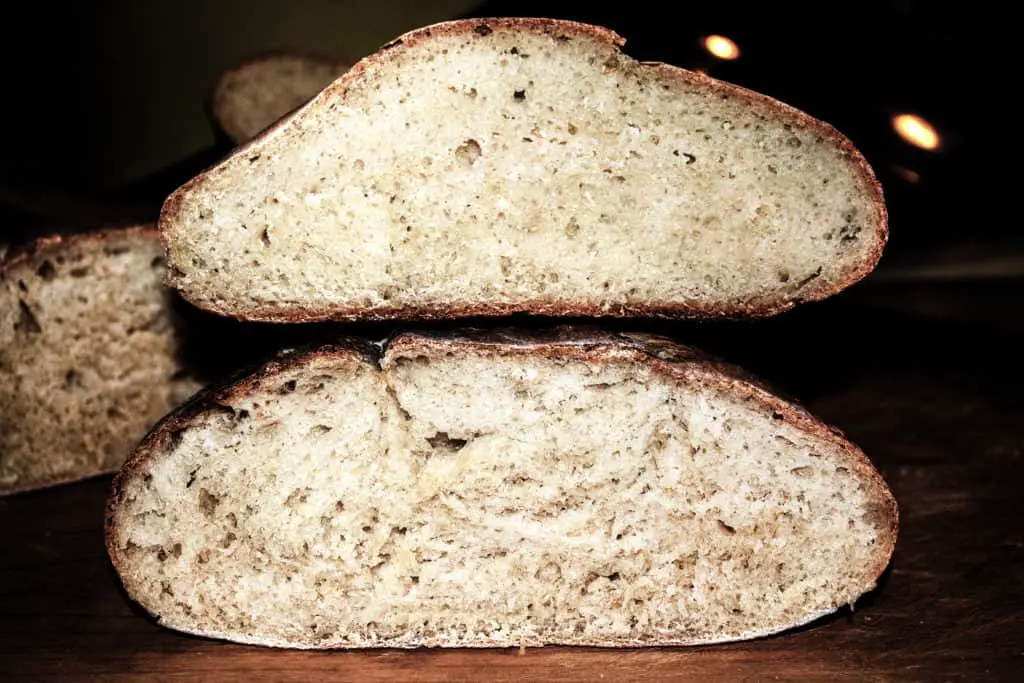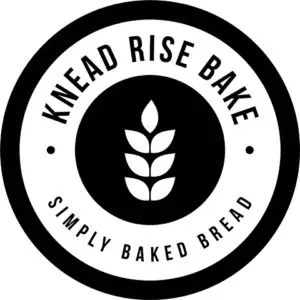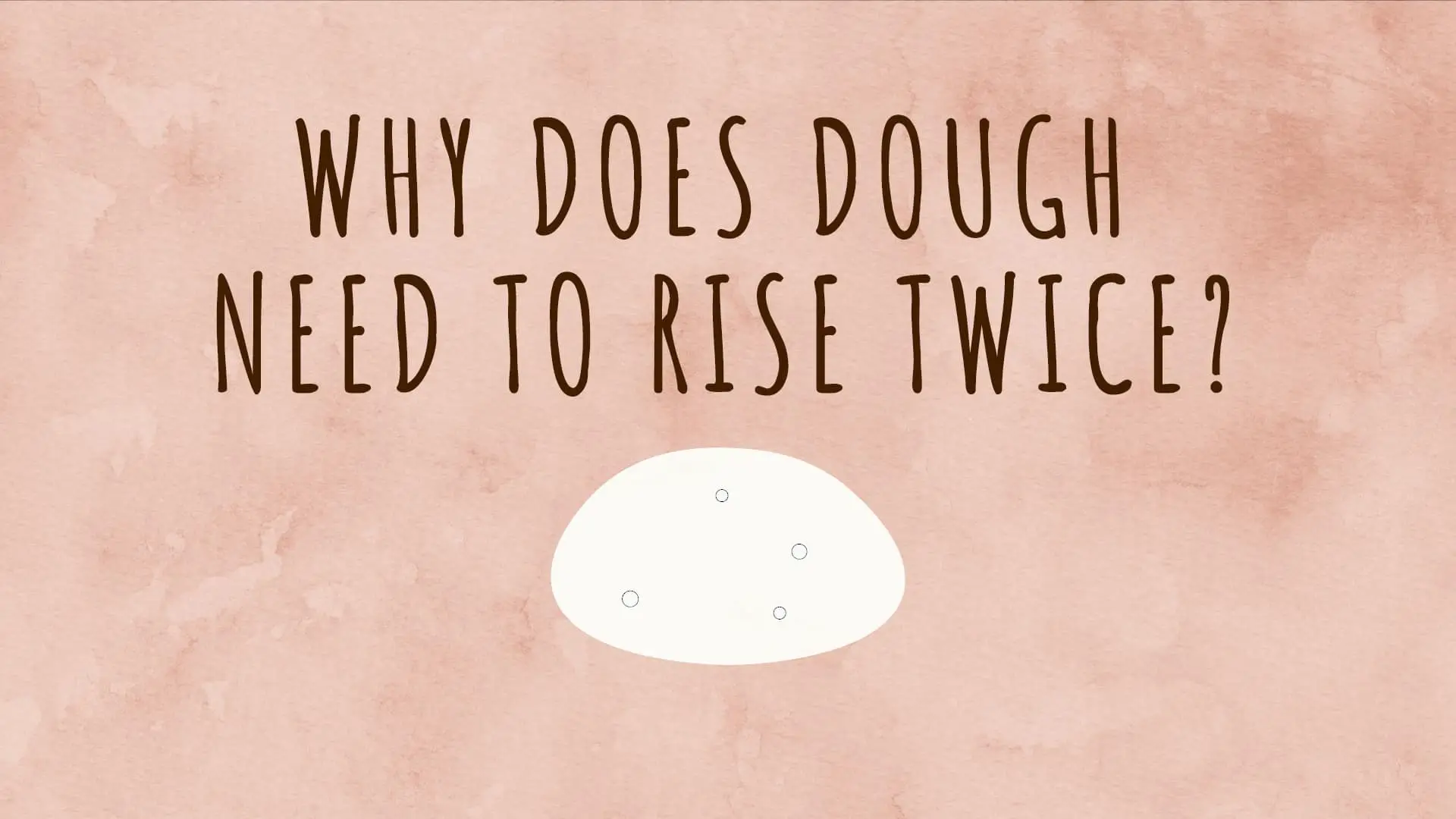As a new bread baker, I’ve been curious about the reasoning for letting yeasted dough rise twice. It’s so ubiquitous in bread baking that I knew there must be a very good reason for it. Yet, at the same time it just seems counterproductive to let dough rise, only to punch it down and start all over again. It would be much quicker and convenient to shape the dough right after kneading, and let it rise just once.
I decided to look into it and do some experimenting. According to most baking resources, in order to get the best texture and flavor that is typical of leavened bread, dough should be given a second rise before baking. A second rise allows yeast more time to work, which changes the actual fibers within the dough. The second rise helps develop a lighter, chewier texture, and a more complex flavor. However, it is not essential that dough rise twice. Many varieties and recipes allow for a single rise while others even call for more than two.
I HAD to know for myself just how much of a difference the second rise would make vs a single rise. I took a batch of basic yeasted dough, split it into multiple lumps and let some rise once, and some rise twice. I was definitely surprised by the outcome; you can scroll past the next section if you’re interested in seeing those results now. But first, let’s dive into why a second rise is said to be best.
Why is a Second Rise the Standard in Baking?
This question can be answered best by stepping back a stage or two and describing what takes place during the first rise. Dough rises because yeast goes to work feeding off of the energy in the basic mixture of ingredients. The yeast begins transforming protein strands, and one of the waste products is gas. The gas fills the dough, causing the rise to happen. The rise itself can be counterproductive as it begins slowing down the work that the yeast can do. This is due to the bubbles that form, which separates the yeast from its food supply.
Much of the changes needed to technically have leavened bread take place during the knead and first rise. However, the dough likely needs a bit more time to take on the full characteristics of leavened bread; the chewy crumb, light fluffy body, and semi-sweet flavor notes. To maximize those characteristics, we need to find a way to let the yeast continue to work. The most common way to do this is to gently punch or knock the gas out of the way.
This is where the second rise comes into play. After punching down, or removing the gas from the dough, everything is flat again. Which is perfectly fine for a flatbread. But if we want a loaf, we need to let it rise again. Thankfully, by knocking out the gas, the yeast has been reunited with the food supply that the air bubbles so rudely came between. Being reunited, the yeast keeps doing what it does best, improving texture and flavor and most notably, for this topic, creating gas. We get a second rise with the benefit of better development.
There are certainly other ways to build flavor and texture, but believe it or not the punch down and second rise is among the quicker methods here.
Depending on the dough, It is also said that the changes during the first rise creates a dough that is easier to shape than simple kneaded dough. Better shaping is said to produce a more consistent rise and spring during baking. That also will produce a difference in texture and flavor. This seems to be true in my experience, as I find dough is easier to work with after the first rise. However, with more experience working with dough, maybe it wouldn’t be that big of a difference. Time will tell for me.
My Experience With a Single vs Double Rise

I must admit, with a second rise being such a common practice,
the differences were not as drastic as I had anticipated. Visually, the differences were definitely noticeable, especially the texture of the crumb. As you can see in the picture, the top loaf has a more dense texture. However, when I actually tasted the bread, those textural differences weren’t polar opposites. I don’t know exactly what I was expecting, but I think I was expecting more of a scone or biscuit-like texture In the single-rise. I know technically why it wouldn’t end up like a biscuit, but I was still expecting it.
Also, the differences in flavor were surprisingly subtle. Remember that this was just a basic loaf of plain artisan white bread. How different can it really be, after all? But, overall, the biggest differences between the dough only risen once versus the dough given a second rise were the shape and size which ultimately impacted the texture of the crumb. The second rise loaf had a more even shape, airy texture, and larger size (bottom loaf in the picture).
That being said, even though there wasn’t a dramatic difference, the flavor and texture were better in the second rise loaf. All of those trademark characteristics of bread were better developed with a second rise. The single rise loaf was still chewy, just less than its competitor; and it was certainly denser. The two-rise bread also fared better on the second day, holding its tenderness better.
My final verdict on this one? You probably guessed it, but I preferred the loaf that was given a second rise. However, the single rise produced an acceptable loaf of white bread. I’m going to continue doing a second rise, as it did produce a superior bread. However, if things get away from me and I’m crunched for time, I’ll certainly put a single rise dough in the oven and live with the outcome.
Ultimately, it’s just nice to know that I have more options that make baking bread more accessible for a busy schedule. Learning that I could proof in the fridge overnight, or start some dough in the morning and let it rise all day in the fridge made me feel like I didn’t need a week off of work just to produce a single roll for dinner. Knowing I can bake after the first rise just makes fresh bread all the more accessible.
If Two is Better, Then Wouldn’t Three Be Even Better?
Given the fact that a second rise, if all goes according to plan, will produce a better structure and in some situations flavor, should we go for a third rise? Or four? Well, yes and no. Some breads do call for a third rise. However, for your basic loaves a second rise is probably all that is practical. This is true for a couple reasons:
1. The yeast will run out of food: Yeast will only keep working as long as it has food to consume, and there is a limited supply in the mix of ingredients. Each time you punch down the dough, the yeast will have less food to feed on to continue to rise. Which means at some point it will no longer rise, or it will rise at an extremely slow rate.
2. The benefits diminish over time: The third rise just simply does not add enough of a bonus in order to continue the process and risk having a flat bread because the yeast ran out of food. It probably took a couple of hours to get to the end of your second rise; an additional hour or two at this point needs to have a bigger reward than a little bolder flavor. If we try to compensate for this by adding more yeast, we could run into other issues. Too much yeast can begin to taste a little too much like alcohol and have an unpleasant sour flavor.

